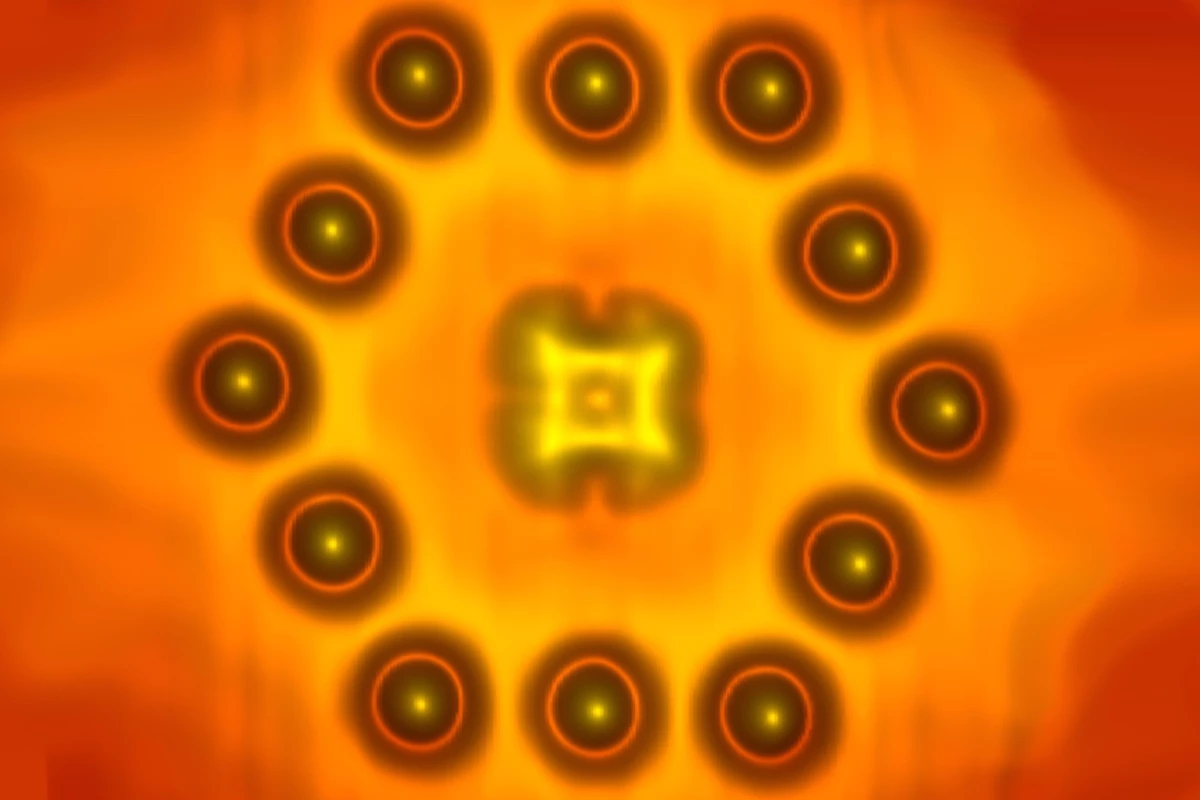Researchers from Germany, Japan and the United States have managed to create a tiny, reliable transistor assembled from a single molecule and a dozen additional atoms. The transistor reportedly operates so precisely that it can control the flow of single electrons, paving the way for the next generation of nanomaterials and miniaturized electronics.
For our electronics to become more powerful it's vital that the transistors, the tiny switches that make them up, keep getting smaller and smaller. However, there is a limit to just how much the silicon-based transistors as we currently use can shrink. A single silicon atom is about half a nanometer in size, meaning that, in the current generation of electronics, the terminals of the switch are only separated by around 30 atoms. Once that number drops to single digits these transistors will become inoperable as quantum mechanics starts getting in the way, with electrons spontaneously jumping from one end of the switch to the other whether the switch is open or closed.
Tiny molecular transistors much smaller than the ones inside our computers (as small as two nanometers) have already been built, but the issue that researchers now face is to find a way to control them in a reliable way. This is not an easy feat, as molecular transistors are often so small that their on/off state depends on the location of a single electron.
Now, an international team from Paul-Drude-Institut für Festkörperelektronik (PDI), the Freie Universität Berlin (FUB), the NTT Basic Research Laboratories (NTT-BRL), and the U.S. Naval Research Laboratory (NRL) has built a molecular transistor that can reportedly be controlled precisely, in what could mark an important step toward the advancement of miniaturized electronics.
The transistors of today are built using a top-down approach where bulk silicon is gradually etched into the desired pattern. A molecular transistor, however, must be built from the bottom up, by assembling atoms one by one in a chemistry lab. Although this may sound highly unusual and extremely laborious, it's also a very precise and reproducible process that has the potential to make the transistors of tomorrow highly reliable despite their incredibly small size.
Researchers Stefan Fölsch and team built their transistor using a highly stable scanning tunneling microscope (STM). The device was assembled by taking a crystal of indium arsenide and placing 12 indium atoms laid out in a hexagonal shape on top of it, with a phthalocyanine molecule in the middle.
As the researchers explain, the central molecule is only weakly bound to the crystal surface beneath it, and this means that, when the tip of the microscope is very close to the molecule and a voltage is applied, single electrons can tunnel between the surface of the crystal and the tip of the microscope. The positively charged atoms around the molecule act as the gate of the transistor, regulating the electron's flow and leading to a functioning and reliable molecular transistor.
One unusual fact observed was that the molecule orients itself in a different direction depending on its charge state and, in turn, the orientation of the molecule has a strong effect on how the electron flows across the molecule.
The researchers are now working on trying to better understand this phenomenon and the link between molecular orientation and conductivity. If exploited, this knowledge could help us build molecular nanostructures with a very precise control over single electrons, leading to new types of high-performance semiconductors and nanomaterials.
The findings appear in this month's issue of the journal Nature Physics.
Source: U.S. Naval Research Laboratory




